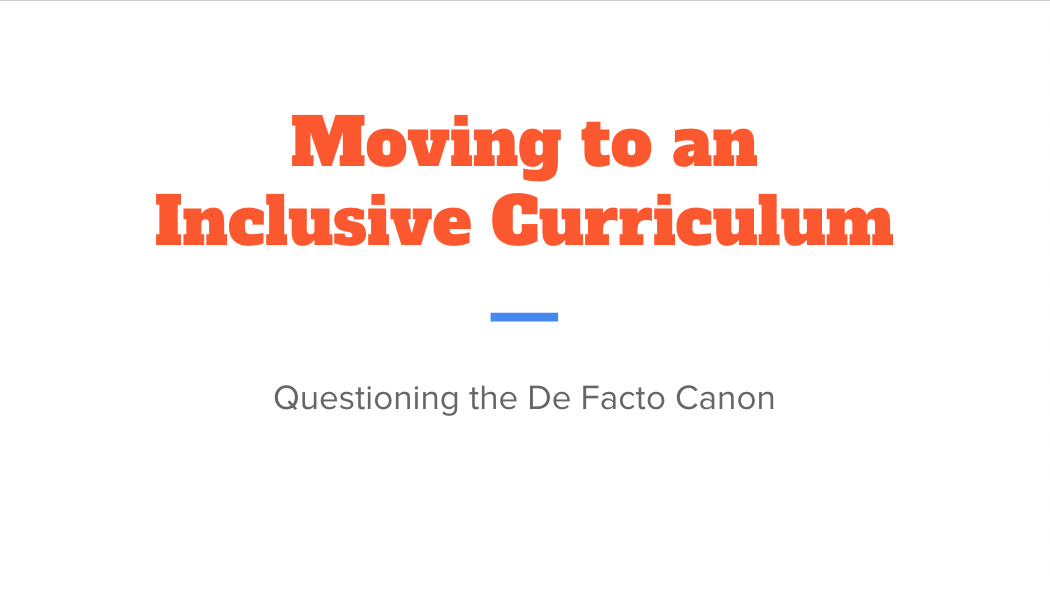Curriculum Leadership
Below are examples of curriculum-related projects I spearheaded during my tenure as English department chair, highlighting my passion for diversity, equity, and inclusion work, my interest in encouraging a love of independent reading, and my efforts to blend new media with traditional texts in the English classroom.
Questioning the de facto canon
As chair, I aided my department in reevaluating what texts we teach and why we teach them. In particular, I urged us to edit the curriculum to include a greater number of traditionally underrepresented voices.
In a presentation to the department, I made an argument for taking a critical look at de facto canonical texts, such as To Kill a Mockingbird and Catcher in the Rye, and questioning if they are serving our students as well as other texts might. It was the beginning of a conversation we continued to have during my seven years leading the department.
Watch my video walkthrough of the highlights of this presentation.
View my walkthrough of the presentation.
Making vertical alignment visible and accessible
Before I became chair, we created a document charting the vertical alignment of skills across our curriculum. It was an unwieldy spreadsheet, so I had the idea of creating grade-level goal one-pagers that teachers could use to align their curriculum and easily share with parents and prospective families. Over the years, they became a useful means of establishing clear communication within the department and with administrators and the broader community.
Here are a few samples:
Creating a reading culture
With the ubiquity of technology and the fast pace of academic and extracurricular life, students' time to pursue their interests through reading was slim to none at Flint Hill. Research tells us that life-long readers tend to be happier and more successful adults. For those reasons (and many more), I decided to propose to the curriculum committee and then the entire Upper School a method for establishing a dynamic reading culture in the high school program.
View my walkthrough of the presentation.
Integrating and analyzing new media and film
Even before I became chair, I was convinced that teaching only traditional forms of literature wasn’t adequately addressing my students’ learning needs. I began integrating film more purposely, teaching it not as a shadow of a literary text but as a text in its own right. As chair, I continued to develop the curriculum to include other forms of media—most notably, I help craft the Visual Literacy and Film Criticism courses. I also encouraged teachers to include film, graphic novels, and podcasts in their courses.
Here are a sample syllabus and a course proposal:
Shifting from a chronological to a theme-based curriculum
Early in my tenure as department chair, after receiving feedback from students, teachers, learning counselors, and administrators, it became clear that the British survey we offered during the sophomore year wasn’t working for our students. Having taught it several years, I agreed. So, I proposed a shift from a chronological survey to a theme-based structure. I argued that such a change would also allow for more underrepresented voices to enter the curriculum.
View my walkthrough of the presentation.


